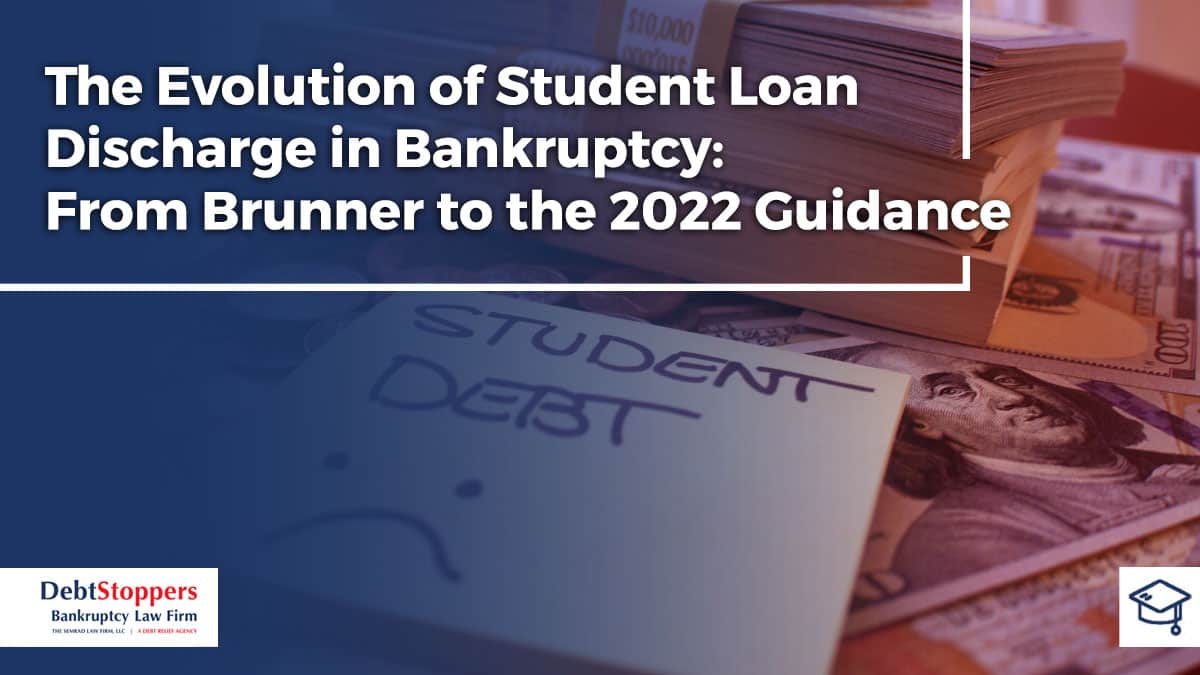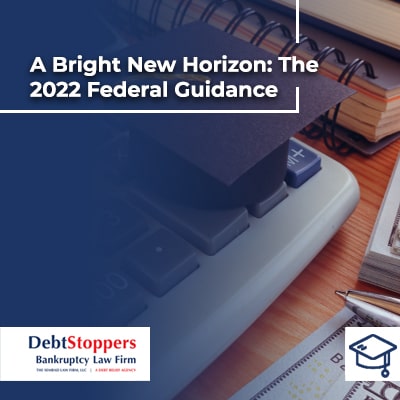The Evolution of Student Loan Discharge in Bankruptcy: From Brunner to the 2022 Guidance

In today's digital age, the old adage "Don't believe everything you read" rings truer than ever, especially when it comes to navigating complex topics such as bankruptcy law. A recent article on Investopedia, a platform many trust for financial guidance, has presented misleading and outdated information on discharging student loans in bankruptcy. This oversight may have severe implications for those desperate for relief from student loan debt.
The Historical Narrative: The Brunner Test
Historically, discharging student loans in bankruptcy has been seen as an insurmountable challenge. The commonly cited Brunner Test made it notoriously difficult for borrowers to obtain relief from their educational debts.
For the uninitiated, the Brunner Test established a three-pronged criterion that borrowers needed to satisfy:
Demonstrating that repaying the student loan would create an undue hardship, thereby making it impossible to maintain a minimal standard of living.
Providing evidence that the circumstances causing this hardship are likely to persist for a significant part of the loan's repayment period.
Having made good faith efforts to repay the loans.
This rigorous framework often led to a bleak outcome for many borrowers, resulting in the widespread belief that student loans were nearly impossible to discharge in bankruptcy.

A Bright New Horizon: The 2022 Federal Guidance
Fast forward to November 2022, and the landscape has dramatically changed. The Departments of Justice and Education introduced groundbreaking guidance, ushering in a new era for borrowers and bankruptcy professionals alike.
The 2022 federal guidance has effectively simplified the criteria for student loan discharge in bankruptcy:
The loan has been in repayment for 10 or more years.
No degree was secured using the loan.
The borrower is aged 65 or older.
The borrower has experienced unemployment for five of the last ten years.
The borrower has suffered a disability or injury.
This streamlined process, coupled with the broader qualifying criteria, offers a lifeline to borrowers previously denied under the Brunner Test's restrictive parameters.

Our Track Record Speaks Volumes
Since the introduction of this new guidance, Debtstoppers has been at the forefront of this transformative shift, successfully filing scores of bankruptcy cases specifically aimed at discharging student loan debts. We're proud to report a remarkably high success rate, signaling a triumphant departure from the previous narrative.
A Word to the Wise: Choose Your Attorney Carefully
It's crucial to understand the weight of this shift and its implications. If your bankruptcy attorney is still adhering to outdated narratives, or worse, is unaware of the 2022 federal guidance, it's a glaring red flag. Your path to financial freedom is sacred, and your chosen legal representation should be equipped with up-to-date knowledge and expertise. If they're not, it's time for a change.
In conclusion, the realm of student loan discharge in bankruptcy has evolved considerably, rendering previously held beliefs obsolete. With the 2022 federal guidance offering a fresh beacon of hope, it's imperative to collaborate with attorneys attuned to this revolutionary shift. As always, the right guidance can spell the difference between continued financial strife and the long-awaited relief from burdensome student loan debts.





